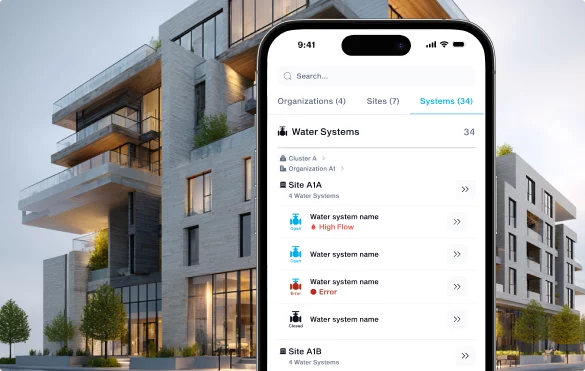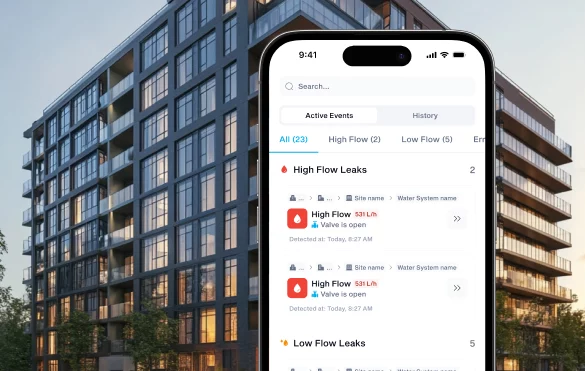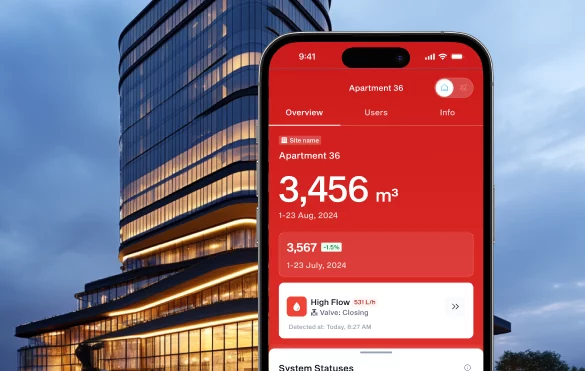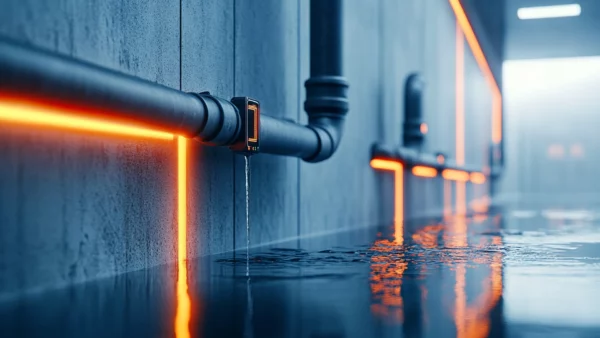
Water needs management. Technology can control it.
We use AI to understand your water – when it leaks, where it’s wasted and how much is used, exactly. We give you the power to act – across all your water systems – in one central place.
- Average system customer savings. Comply with LEED & BREEAM
- Insurance payout reduction as measured by leading insurers
Your complete platform for water management and leak prevention
Our System is a robust, proven and AI-powered intelligent water management platform.
Prevent water damage
Stop leaks with real-time anomaly detection and remote automatic shut off.
Be sustainable and efficient
Reduce water waste, cut carbon emissions and improve your sustainability rating.
Know your water data
Get complete visibility of all your water data across systems and facilities, in one place.
Manage 100% of water, across many attributes & all systems
Any water system
Water needs to be managed across many different systems, from main feeds through cooling towers, HVAC systems, sub-floor heating and more. Each water system is different and requires specialized analysis and control methods. Our system supports all water systems; you can begin using Wint for one and add more later.


Detection means action
When it comes to water, the ability to separate signals from noise is what matters. Our system uses artificial intelligence and signal processing to learn your normal usage patterns. It then identifies anomalies, alerting and shutting off water when needed.
Make good water decisions
Our insights, dashboards and reporting, both on desktop and mobile, let you identify sources of waste, detect issues and optimize consumption.
Reliable and accurate
Our control units read water flows in real time and use AI to effectively detect anomalies. With flexible connectivity, backup power and autonomous action, Our system ensures smooth operations, even if connectivity is lost or power is down.
24/7 service & proactive alerts
Our system’s control center is continuously staffed, ensuring someone is always available to answer questions and to act when an unexpected incident happens.

The only solution with a water damage warranty
We offer the construction industry’s only water damage warranty program. Available in Ireland, the United Kingdom and the EU.
Learn More

